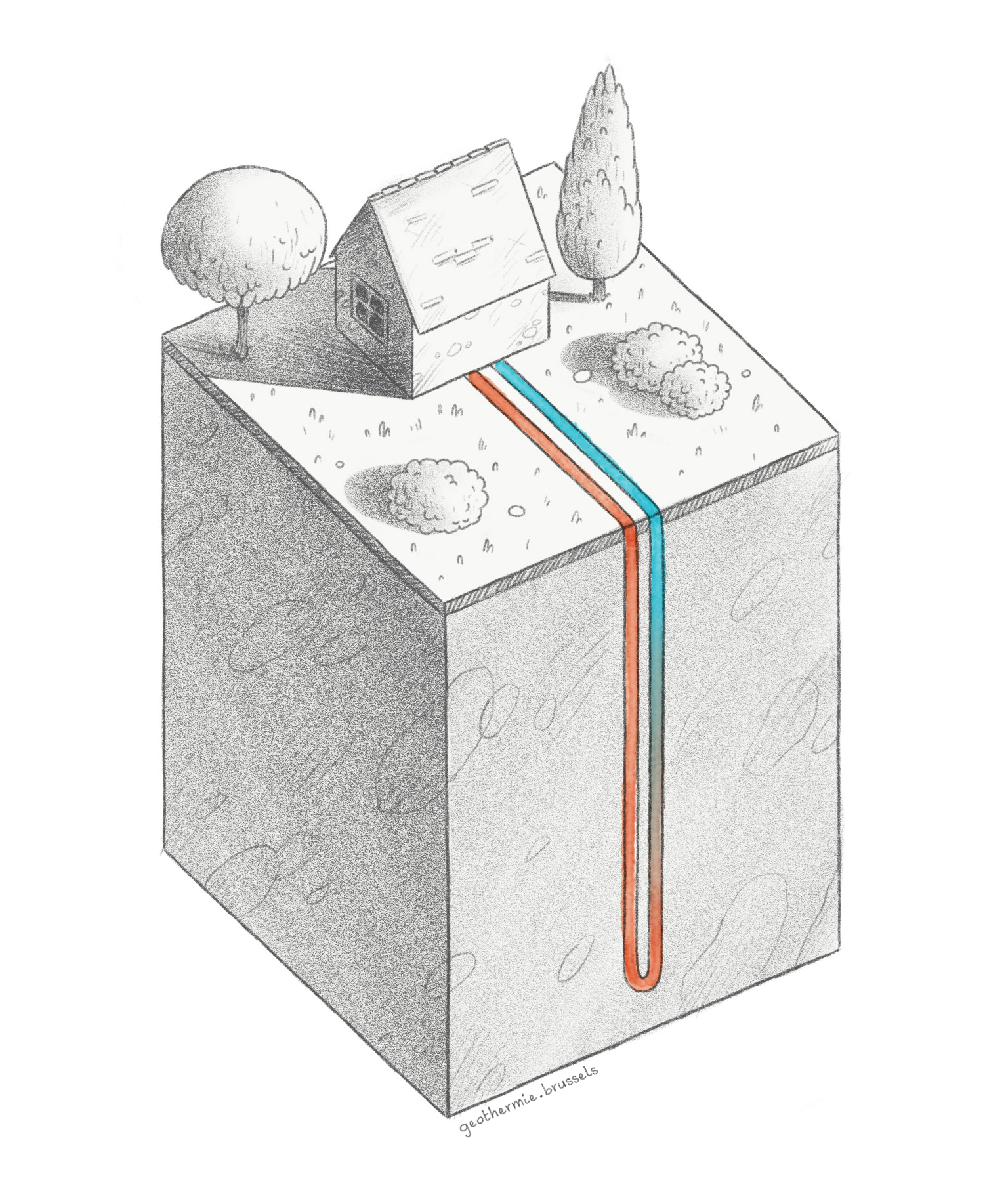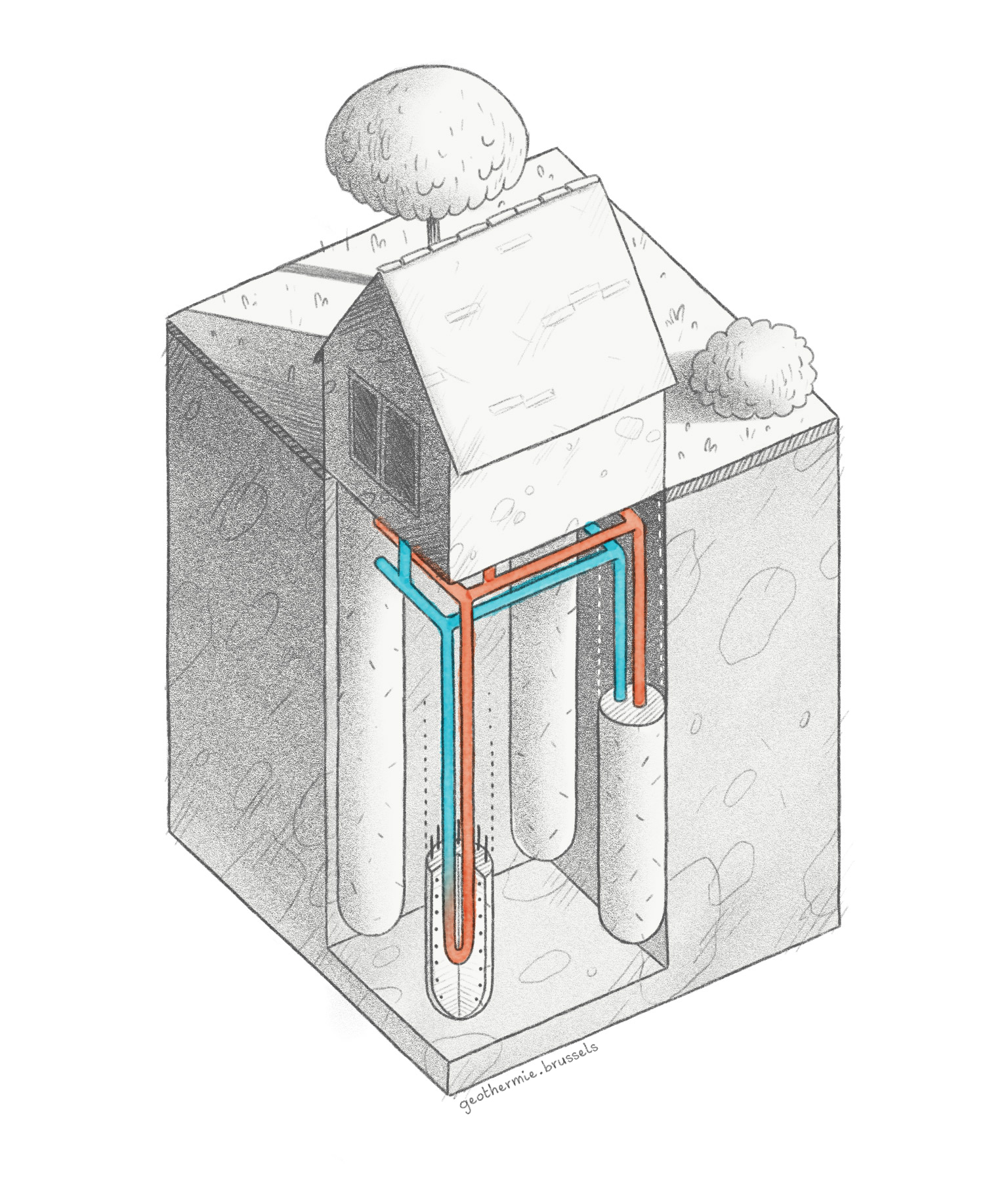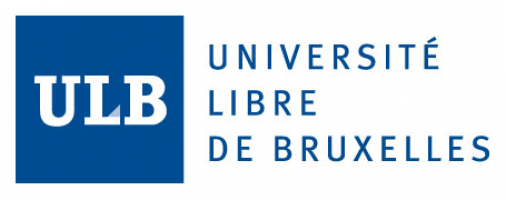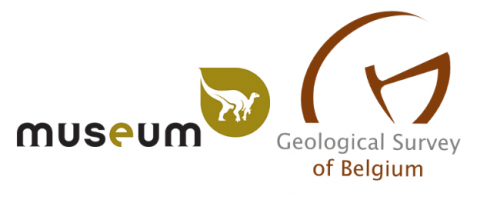Shallow geothermics
Shallow geothermics requires drilling vertically 10 to 300 metres into the ground, in order to capture or dissipate heat (for heating or cooling, respectively).
Ground temperature in the first ten metres varies with the seasons. Beyond ten meters, the natural ground temperature remains generally stable. In Belgium, this temperature varies between 10 and 14 °C at a depth of 20 – 30 metres, increasing by 3 °C on average every 100 metres.
Shallow geothermics uses this heat reservoir to meet the heating and cooling needs of buildings. Considering the ground's relatively low temperature at these depths, these systems rely on geothermal heat pumps to provide sufficient heat to the building. During the winter, when more heating is needed, the heat pumps' efficiency is not affected by lower air temperatures, unlike aerothermal heat pumps that capture heat from the atmosphere.
Under the proper geological conditions, the system can also be used in reverse. The heat stored underground in the summer can be reused for heating in the winter.
Cooling can be achieved by exchanging heat directly with the Earth, a process known as geocooling (or passive cooling), using a reversible heat pump.
A shallow geothermal system is referred to as closed or open depending on the capture system it relies on.
Closed systems
A geothermal system is ‘closed’ if the heat transfer fluid runs through a closed loop field installed underground, in geothermal trenches or holes; these loops fields come in a variety of shapes. The most common system consists in a number of double U-tubes inserted in a vertical hole 150 mm in diameter; the hole and pipes are then grouted using a sealant that offers good thermal properties, in order to minimise the loop field's thermal resistance and maximise the exchange of heat between the ground and the heat transfer fluid. The complete assembly (holes, pipes, and grout) is referred to as a geothermal loop field. It should be noted that other types of geothermal loops exist, e.g. coaxial loops and triple-U loops.

In heating mode, the heat transfer fluid is injected into the loop field at a lower temperature than the ground, and becomes warmer as a result. It can then be retrieved at the other end of the loop at a higher temperature. This temperature differential can be used by a geothermal heat pump, in which the heat transfer fluid is cooled before being re-injected in the closed loop; the thermal energy captured by the heat pump is then used by the building's heating system. In cooling mode, the process is reversed: the heat transfer fluid is injected in the loop field at a higher temperature than the ground, which results in heat being dissipated into the Earth.
Alternatively, geothermal loops fields may also be combined with the building's foundation piles. These are referred to as energy piles. In this system, the closed loops are built directly into the foundation piles, which then have two functions: they provide the building's foundation structure, and a thermal function as a heat exchanger between the building and the Earth. In this case, the geotechnical sizing of the piles must take into account the effect of heat on their shape and stability. A considerable benefit of such a system is that it requires no drilling beyond what is necessary for the structural piles. However, energy piles generally reach fairly shallow depths compared to traditional vertical loops fields; as a result, the loops are shorter and do not reach deeper subsurface layers that offer better thermal properties.

Open systems
An ‘open’ geothermal system uses the natural heat of groundwater from aquifers. Open geothermal systems generally consist in two geothermal wells: groundwater is pumped out of the first, and re-injected into the second. Open systems require a geothermal heat pump. In heating mode, water from the aquifer is pumped at its natural temperature, then cooled by the heat pump, and finally re-injected at a lower temperature. The heat produced is then used by the building's heating system. In cooling mode, the process is reversed.

This geothermal system requires an aquifer with sufficient thickness and hydraulic conductivity to support the pumping rate without drying up prematurely. Care must be taken to avoid excessive reduction of the aquifer's water level, as this could result in the surface subsiding.
An aquifer that is naturally recharged is preferable, as the underground heat reservoir is continually renewed with water at the ground's natural temperature after heat has been captured by the geothermal system. On the other hand, a static aquifer (with no water flow) allows for seasonal heat storage. The heat stored in the aquifer during the summer as a result of the cooling process can be reused in the winter for heating.
Geocooling
At depths of 20 metres and more, ground temperature is not influenced by the seasonal cycles of atmospheric temperature. In the summer, the Earth therefore remains at a lower temperature than the atmosphere and can provide cooling for buildings. Geocooling consists in running a fluid through geothermal loop fields; the fluid becomes cooler in contact with the ground and is then used to cool the building through terminal units. This system provides ‘almost free’ cooling, as the only energy requirement is that of the pumps: it is a passive cooling technique.
Another benefit of geocooling is that it refills the underground heat reservoir in the summer after heat was extracted by the heat pump in the winter; as it cools, the heat transfer fluid in the geothermal loop fields heats the Earth, and this heat can be reused the following winter.
Geocooling can be used with either a closed system (exchanging heat with the Earth) or an open system (using the temperature of aquifers). However, the system must be installed at depths that are not affected by seasonal temperature cycles (more than 20 metres deep).
It should be noted that geocooling (passive cooling) can be used in tandem with a reversible geothermal heat pump system (active cooling), which would only be used at peak times when geocooling alone is not powerful enough.




